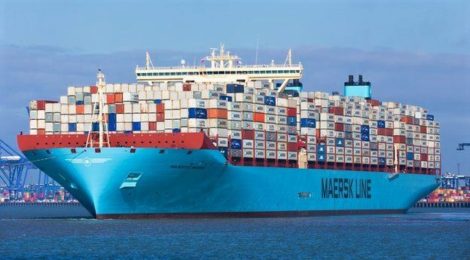
Shipping Industry Wants To Help Save Their Blue Planet
Shippers and skippers call for global carbon tax to fund mitigation of ocean collapse and climate change
90% of global fleet agree work to reduce the impact of their carbon footprint is long overdue
The most immediate and effective means to accomplish this goal is for the fleet to engage in ocean pasture restoration.
A tiny fraction, 1/100th of 1% of the fleet crossing time, devoted to Nature-Based OPR will replenish and restore oceans pastures repurposing a substantial fraction of the industry carbon emissions into restored ocean life.
Guy Platten, secretary-general of the International Chamber of Shipping has told world media this week that the industry is ready to act.
“A global solution is the only one that’s going to work”,
“Such a tax would incentivize ship owners to invest in and deploy new technology.”
Globally the ocean shipping sector is a big carbon emitter. It’s responsible for about 2% of global emissions, perhaps as much as 800 million tonnes of CO2 every year. If the industry was a country it would be the sixth-largest global polluter, with a blacker carbon footprint than Germany.
The industry dodged a torpedo when it lobbied to continue its Kyoto Accord free ride to avoid specific rules on shipping in the Paris climate change agreement. Now they seem to be seeing the error of their weighs and are making efforts to chart a new course to clean up their act. The Paris Agreement allows for mitigation of the impact of carbon footprints by either emission reduction or even more importantly by methodologies and technologies to remove yesterday’s emissions already causing devastating ocean collapse and climate change. It very specifically calls for ‘blue carbon’ mitigation that takes place in the oceans. You know, the 72% blue part of this planet that is ocean.
The Case For A Carbon Tax To Stimulate Innovation
A recognition of this need to change led the UN agency that regulates shipping, the International Maritime Organization (IMO), to target a dramatic reduction of the industry carbon footprint by 2050. While many single-minded green groups focus exclusively on eliminating their nemesis, fossil-fuel technology, no one in science or industry believes there are technologically or economically feasible pure green energy alternatives to power the industry’s giant ships.
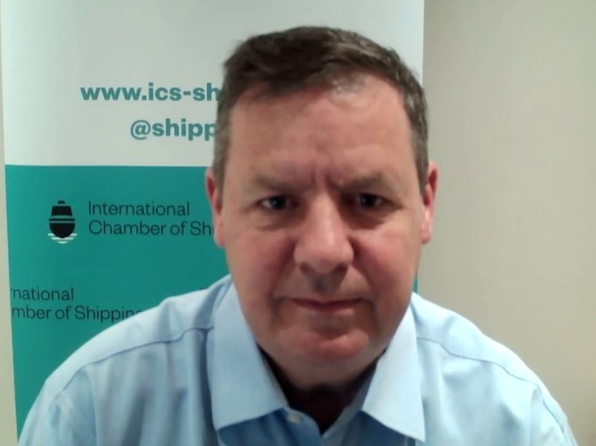
Guy Platten, secretary-general International Chamber of Shipping
Plans underway include the development of a $5bn fund to develop ocean shipping carbon mitigation technologies. Now the industry wants much more in calling for all governments to impose “a price on carbon” that will give ship owners a commercial imperative to change, says Mr. Platten. A worldwide blue carbon market scheme might be negotiated through the IMO. A group led by the ICS has asked the agency for discussions to start “as soon as possible and before 2023, with a view to taking some decisions”.
As well as the ICS, the call has backing from the shipowner’s organization Bimco, Cruise Lines International Association, and the World Shipping Council.
The timeline is a recognition that this will be a complex process that is likely to take several years to enact. Such a tax will almost certainly lead to extra costs for shipping companies that will be passed on to their customers.
That cost will filter through to consumers. The CEO, aka admiral, of the world’s biggest shipping company, Maersk, recently told the BBC the cost of tackling climate change in the industry would “translate into something like six cents per pair of sneakers”.
Mr. Platten said: “It’s complex, it needs to be a global solution, and not regional solutions, as has been mooted by various places around the world. So that’s why we’re calling for this discussion to start now.” Discussions could begin at an IMO meeting in June.
Here’s how the shipping industry can replenish and restore their oceans and in doing so become a green fleet using innovative technology tailored to the industry that government and the private sector have invested hundreds of millions 0ver decadeds to develop and deliver.
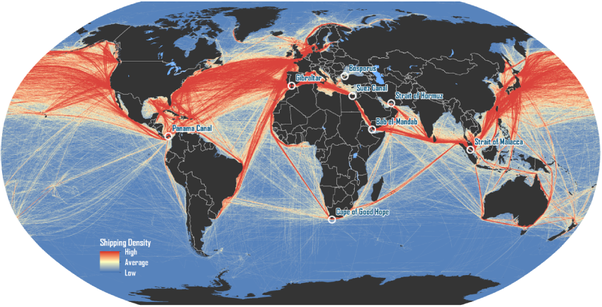
Global shipping lanes often traverse regions with dying ocean pastures.
Every year 11 billion tons of cargo is shipped around the world by more than 50,000 large cargo ships making a few hundred thousand ocean crossings. Transporting goods from port to port is keeps the world’s human economies and societies well-fed and prosperous. But for the oceans themselves, these ships do nothing but leave hurt and harm in their wakes. They might instead immediately become the world’s greatest Green Navy!
We propose that just 100 ships volunteer to be tasked for nature-based ocean pasture restoration for 4-5 days during one of their many annual 40 day voyages.
That commercial effort to perform this vital ocean replenishment and restoration duty will return the oceans to historic levels of health and abundance beginning with the very first such voyage.
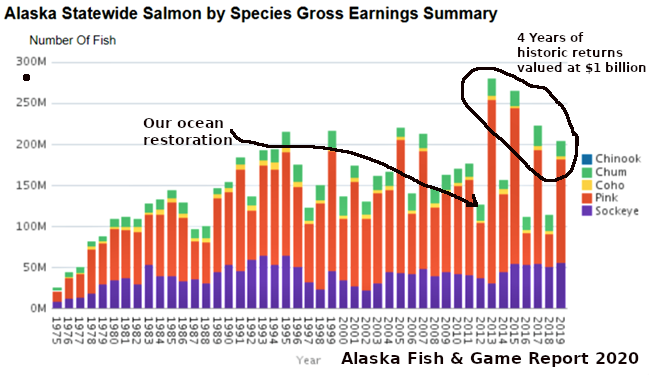
This chart from the State of Alaska shows 45 years of salmon catch data. Immediately following our OPR work (pointed to by the arrow), the fish came back providing more than 4 times the expected catch of 50 million Pink Salmon became 225 million fish. Click to read more
Within 3-5 years their efforts would restore a vast part of the world’s oceans to historic health and abundance! OPR works immediately with the delivery of billions of additional fish to feed a hungry world, living carbon evidence that the ocean’s photosynthetic capacity is being restored.
Proof that OPR brings back the fish is seen in this chart showing 45 years of salmon catch in Alaska. Our week-long dusting of a selected ocean pasture returned it to historic health and abundance as recorded in the largest catch of salmon in history!
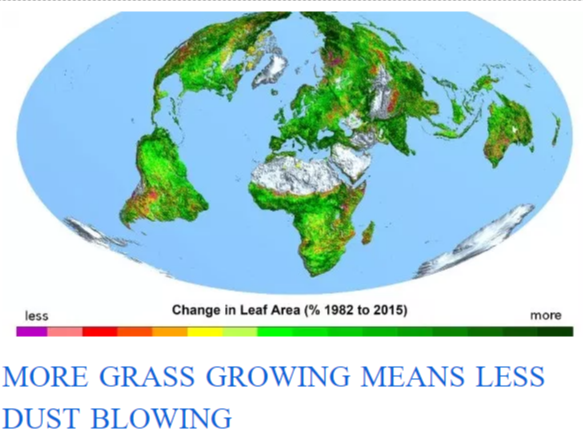
Today’s high and rising CO2 is turning dusty regions of the world into lush green grasslands. That is shown in countless agricultural reports and means less dust is blowing in the wind. That missing dust that once nourished ocean pastures is responsible for the loss of 50% of ocean life in the past half a century. Click to read more.
OPR replenishment of dust for the oceans will restore the plankton pastures, as each pasture grows it will repurpose tens of millions of tonnes of CO2 into additional ocean life. Fewer than 100 such ocean pasture restorations would repurpose the majority of the CO2 emissions the entire global fleet pours into the air and ocean. The cost to the shipping industry, which annually generates trillions in earnings, would cost mere millions, an infinitesimal tax. Now that’s a tax the shipping industry can afford!
More Details For Ship Owners
OPR research has shown that its special formulations of natural trace nutrients including iron will replenish and restore ocean pasture plankton blooms when applied in prescribed concentrations and to select nutrient-deplete waters. OPR technology combines our special formulations of trace supplement prescriptions with our state-of-the-art ocean pasture monitoring technology. As a ship, whether it be a cargo ship, oil tanker, or coal carrier, traverses the world’s oceans it will commonly pass by or through many ocean pasture regions in need of replenishment and restoration. The world’s global ocean pastures are today constantly monitored by OPR oceanographers who using many satellite platforms and analysis are able to accurately produce ocean plankton maps much like the weather maps.
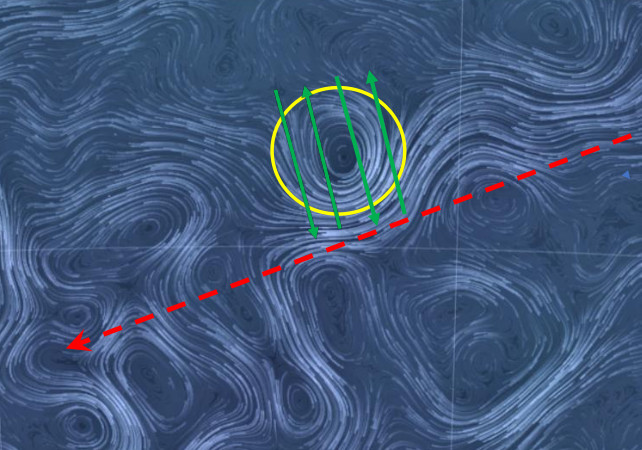
OPR Commercial Operations Model – The red line shows a ship’s planned course. The Yellow circle is a meso-scale ocean eddy, an ocean pasture in need of care. The Green lines show the ships OPR course of 4 days to replenish and restore that ocean pasture.
Onboard each ship equipped is our computer control and comm link connected via satellite to our central oceanographic control center. When the ship is nearing an ocean pasture candidate region our oceanographers will muster to duty. Our OPR team will send to the ship’s captain a new set of course and speed directions for the ship to follow for up to 5 days. Our automated containerized apparatus, consisting of just 4-5 shipping containers, will then autonomously begin the dust replenishment process. This amounts to pumping prescribed amounts of OPR plankton nutrient supplement into the ship’s prop wash.
The amount of natural mineral dust prescribed with be 100-200 tonnes, compared to many large ships which carry 200,000 tonnes of cargo this is just 1/10th of 1% of the ship’s commercial load. The replenished mineral dust is further dispersed and mixed by ocean currents and will soon restore between 10,000 – 50,000 square km of ocean pasture.
Plankton respond immediately to this very slightly nutrient-enriched ocean pasture water (only parts per trillion enrichment is required) and a rich plankton bloom is soon underway stripping atmospheric CO2. Don’t be misled to think of this as being ‘a a fertilization’ process as substances known as fertilizers when applied to living systems are required in amounts of parts per million, not trillion, a million times more than OPR’s natural mineral dust. Engineering Contact:
Shipowners interested in the installation of OPR technology onboard their vessels should contact our engineering and ocean science division for details specific to technology specific to their vessel. Our qualified marine engineers work with ship owners to adapt our technology to each vessel meeting all necessary marine regulations. Installation is a simple process once basic engineering plans are confirmed and require no dry-docking. Installation of the containerized tech by OPR engineers can usually be completed in a matter of days at ports around the world.








